Japanese Storax (Snowbell)
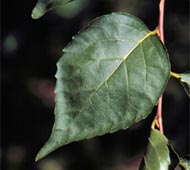
Leaf Characteristics
- broad, flat leaves
- simple leaves
- not lobed
- smooth margins, entire
- alternate leaves
- without needle-like bristles
- not heart-shaped
- widest toward tip or middle
- 1 - 5 inches long
- with silver scales
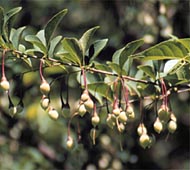
Fruit Characteristics
- other fruit (not cone, winged, acorn, or in pod or capsule)
- without husk or capsules
- loose, not packed tightly together
- fruit with pit
- whole fruit less than 1 inch
- fruit without strap-like modified leaf
- not like rasperries
- fruit not at end of single stalk
- loosely clustered
- leaves not modified
- ovoid, gray-green, about 1/2" to 1" long
- fruit not at ends of club-shaped stalks
Japanese Storax (Snowbell)
Styrax japonica
The relatively small Japanese Snowbell is native to China and Japan. It originally was brought to this country in 1862. The gray bark is smooth. The branches spread widely, often to twice the height of the tree, and they give the tree a flat-topped appearance. The flowers appear after the leaves are fully developed, and they hang beneath leaves, twigs and branches. The Japanese Snowbell prefers acid, moist but well-drained soils with lots of organic material. Landscapers and gardeners plant this tree as an ornamental. There are several varieties of the tree, including a heavily textured form that was introduced in 1985 from Korea by the U.S. National Arboretum.
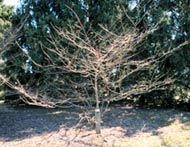 Tree Size
height 15' - 30'
Tree Size
height 15' - 30'
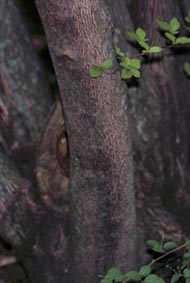 Bark
Bark
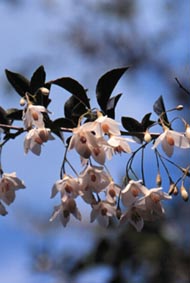 Flower
Flower 